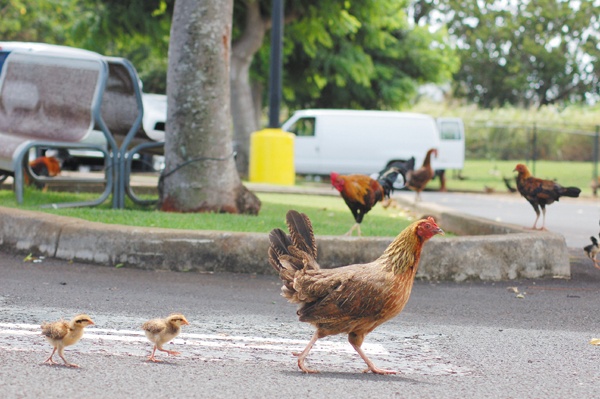If you’ve ever visited Hawaii, you might have noticed something unusual: chickens everywhere! They roam freely in parks, backyards, and even in the streets. This curious sight leaves many people wondering, why are there so many chickens in Hawaii? In this article, we will explore the origins of these chickens, their unique lifestyle, and the reasons behind their abundance. Whether you’re planning a trip to the islands or just curious about the local wildlife, you’ll find this topic fascinating. Let’s jump into the world of Hawaii’s feathery residents!
The Origins of Chickens in Hawaii
Chickens were first brought to Hawaii by Polynesian settlers over a thousand years ago. These early settlers traveled vast distances across the ocean, bringing various animals and plants with them for food and companionship. Chickens were particularly valuable because they provided a reliable source of protein through their eggs and meat.
As Polynesians established communities in Hawaii, they raised chickens as part of their agricultural practices. These birds quickly adapted to the tropical environment, thriving in the islands’ warm climate and abundant food sources. Chickens became an integral part of Hawaiian culture, often associated with feasts and celebrations.
Later, in the 19th century, European settlers and plantation owners brought additional chicken breeds to the islands. These new breeds mixed with the local chickens, leading to the diverse population of chickens we see today. As a result, Hawaii is home to many types of chickens, each contributing to the island’s unique ecosystem.
The Lifestyle of Chickens in Hawaii
One of the most interesting aspects of chickens in Hawaii is their lifestyle. Unlike in many places where chickens are kept in coops or enclosed areas, Hawaiian chickens are free-range. They roam freely in neighborhoods, parks, and even on beaches. This free lifestyle allows them to forage for food, which includes seeds, insects, and even small fruits.
The chickens are particularly skilled at adapting to their surroundings. They are often seen foraging for food near garbage bins or in gardens, making use of whatever resources they can find. The warm climate and lack of harsh winters mean that chickens can thrive year-round without the need for shelter.
In Hawaii, chickens also tend to form small groups called flocks. These flocks provide protection from predators and help chickens find food more efficiently. Chickens are social animals and often engage in playful behavior, such as dust bathing and pecking at one another. Their social interactions are an essential part of their lifestyle, and you can often see them communicating with each other through clucks and squawks.
The Role of Chickens in Hawaiian Culture
Chickens have a special place in Hawaiian culture. They are not just animals; they represent resilience and adaptability. Hawaiian folklore includes stories and legends involving chickens, highlighting their significance in the local culture. For example, in some tales, chickens symbolize good fortune and prosperity.
Chickens also play a role in traditional Hawaiian feasts and celebrations. They are often served as part of the meal, and their eggs are used in various dishes. In rural areas, chickens are a source of food for families, especially in communities that rely on subsistence farming. This cultural connection to chickens is one reason why they are so prevalent in Hawaii.
Moreover, chickens contribute to the island’s unique charm. Visitors often find it amusing to encounter these birds wandering around while enjoying the beautiful scenery. This aspect of Hawaiian life has become a part of the islands’ identity, attracting tourists and locals alike.
The Impact of Chickens on the Ecosystem
While chickens are beloved by many, their presence in Hawaii also raises some ecological concerns. The free-ranging chickens can have a significant impact on local ecosystems. They forage for food in gardens and parks, which can lead to damage to native plants and crops. Their scratching behavior can disturb the soil and affect the growth of other plants, potentially leading to imbalances in the local ecosystem.
Additionally, the high population of chickens can attract predators, such as rats and mongoose. These animals, in turn, can threaten the native bird populations in Hawaii. Native birds are often vulnerable due to habitat loss and other human-related factors, so the introduction of non-native species like chickens can complicate conservation efforts.
Some local communities have started initiatives to manage the chicken population, including providing education about responsible chicken ownership and promoting the importance of protecting native species. Balancing the enjoyment of chickens with the need to preserve Hawaii’s unique environment is a challenge that many residents face. You can also read this : What Language Is Spoken in Hawaii?
The Quirks of Hawaiian Chickens
Hawaiian chickens are known for their quirky behavior, which adds to their charm. One notable characteristic is their fearless nature. Chickens in Hawaii often show little concern for humans and will walk right up to people, pecking around for food or simply curiously investigating. This behavior is quite different from chickens in other regions, which may be more skittish.
Another interesting quirk is their vocalizations. Hawaiian chickens are known for their distinctive sounds, and you might hear roosters crowing at all hours of the day and night. While this can be charming to some, it can also be a source of annoyance for residents who live close to flocks. The early morning crowing of roosters is a well-known aspect of Hawaiian life, often referred to as the “Hawaiian alarm clock.”
The color and variety of chickens in Hawaii also make them unique. You’ll find everything from the classic white Leghorns to beautiful, colorful mixes with vibrant plumage. This diversity adds visual interest and beauty to the landscape.
How to Coexist with Chickens in Hawaii
If you’re visiting or living in Hawaii, you may wonder how to coexist peacefully with the local chickens. Here are some tips to keep in mind:
1. Be Respectful
Chickens are part of the local ecosystem and culture, so it’s essential to respect their space. If you see a flock, enjoy watching them but avoid chasing or disturbing them. Remember, they are living creatures and deserve to roam freely without fear.
2. Keep Food Secure
If you’re in a rental property or vacation home, make sure to secure food and trash. Chickens can be quite clever when it comes to finding food, so keeping items stored away will help prevent them from rummaging through your belongings.
3. Observe from a Distance
Enjoy the charm of Hawaiian chickens, but try to observe them from a distance. This way, you can appreciate their unique behavior without intruding on their daily lives.
4. Engage with Local Culture
Chickens are an integral part of Hawaiian culture, so consider learning more about their significance. Engaging with local traditions and practices can enhance your experience on the islands.
5. Support Local Conservation Efforts
If you’re passionate about wildlife and the environment, consider supporting local initiatives that focus on balancing the presence of chickens with the protection of native species. This can be through donations, volunteering, or simply spreading awareness.
The Chicken as a Symbol of Hawaii
Chickens have become an unofficial symbol of Hawaii, representing the islands’ relaxed and carefree lifestyle. They remind us of the beauty of living in harmony with nature and embracing the unique aspects of island life.
Many local businesses have embraced the chicken theme, incorporating it into their logos, souvenirs, and merchandise. Tourists often find novelty items featuring chickens, such as T-shirts and keychains, adding to the fun and charm of their trip.
Chickens also serve as a reminder of the importance of preserving Hawaii’s culture and environment. By understanding the role of chickens in the islands, visitors can gain a deeper appreciation for the local way of life.
Conclusion
So, why are there so many chickens in Hawaii? Their presence is a result of historical, cultural, and environmental factors that have shaped the islands over time. Chickens have become a beloved part of Hawaiian life, offering a unique charm and character that visitors cherish.
Whether you’re admiring their colorful feathers or enjoying the sounds of roosters crowing in the morning, the chickens of Hawaii contribute to the islands’ vibrant atmosphere. By respecting their place in the ecosystem and engaging with local culture, you can enjoy all that Hawaii has to offer while appreciating these quirky and fascinating birds.
For more insights and information about living and traveling in Hawaii, check out Hawaiian Page.



